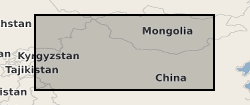Provenance
Type of resources
Topics
Keywords
Contact for the resource
Provided by
Years
Formats
Representation types
Update frequencies
-
The files include full analytical details and datasets from the laboratories used for the acquisition of U-Pb zircon geochronology, Lu-Hf isotope geochemistry and 40Ar/39Ar analysis of detrital white mica. Also included are a list of all the published datasets used in the construction of the MDS and ridge plots for detailed regional comparisons. The data were collected in the interval January 2021 to March 2022 across a number of laboratories: Stockholm, University College London, British Geological Survey, Trinity College Dublin, Australian National University (U-Pb zircon geochronology); Open University (40Ar/39Ar analysis) and British Geological Survey (Lu-Hf isotopes). The analyses were conducted by Teal Riley (Stockholm, British Geological Survey), Ian Millar (Australian National University), Andrew Carter (University College London), Joaquin Bastias (Trinity College Dublin), Craig Storey (Open University). The analyses were conducted to examine the provenance and depositional history of the accretionary LeMay Group complex of Alexander Island.
-

Detrital zircon age data, details of Expedition 362 samples . For more information see published report, https://doi.org/10.1016/j.epsl.2017.07.019 IODP Sites U1480–U1481, located on the Indian oceanic plate, east of the NinetyEast Ridge and west of the north Sumatran subduction margin Site U1480 ~ 3°2.0447'N 91°36.3481'E 4147.5 Site U1481 ~ 2°45.261'N 91°45.5771'E
-

This dataset comprises neodymium (Nd) and strontium (Sr) isotope compositions measured on 72 sediment samples, from IODP Expedition 374 Site U1521 to the Ross Sea. These were collected on the RV JOIDES Resolution. Shipboard biostratigraphy and magnetostratigraphy suggests the samples are mainly early Miocene in age (McKay et al., 2019). The uppermost samples do, however, include younger Plio-Pleistocene sediments. Neodymium and Sr isotope analyses were conducted using a multi-collector inductively coupled plasma mass spectrometer (MC-ICP-MS) and a thermal ionisation mass spectrometer (TIMS), respectively, in the MAGIC laboratories at Imperial College London. Neodymium and Sr isotopes in sediments can be compared to measurements from terrestrial rock samples, allowing the changing provenance of the sediments to be traced. This dataset therefore provides information on how erosion by Antarctica’s ice sheets bordering the Ross Sea has changed over time. Neodymium isotopes are reported in the epsilon notation, which denotes the deviation in parts per 10,000 from the present-day composition of the Chondritic Uniform Reservoir (143Nd/144Nd = 0.512638) (Jacobsen and Wasserburg, 1980).
-

This dataset comprises 35 samples analysed for clay mineralogy from IODP Expedition 374 Site U1521 to the Ross Sea, collected on the RV JOIDES Resolution. Shipboard biostratigraphy and magnetostratigraphy suggests the samples are mainly early Miocene in age (McKay et al., 2019, Proceedings of the International Ocean Discovery Program). The uppermost samples do, however, include younger Plio-Pleistocene sediments.
-

This dataset comprises 40Ar/39Ar dated detrital hornblende grains for 5 samples from IODP Expedition 374 Site U1521 to the Ross Sea, collected on the RV JOIDES Resolution. Shipboard biostratigraphy and magnetostratigraphy suggests the samples are early Miocene in age (McKay et al., 2019, Proceedings of the International Ocean Discovery Program). These data can be compared to terrestrial geochronological data, allowing the changing provenance of the sediments to be traced.
-

This dataset comprises continuous logging of clasts >2 mm from International Ocean Discovery Program Expedition 374 Site U1521 to the Ross Sea, collected on the RV JOIDES Resolution. Shipboard biostratigraphy and magnetostratigraphy suggests the sediments are early Miocene in age (McKay et al., 2019, Proceedings of the International Ocean Discovery Program). Logged clasts are grouped by core into seven main lithological groups: igneous rocks, quartz fragments, dolerites, volcanic rocks, metamorphic rocks, sedimentary rocks and sedimentary intraclasts. A full methods description is provided at the bottom of the data file. The clast abundances can be compared to knowledge of terrestrial geology, allowing the changing provenance of the sediments to be traced.
-

Files contain heavy mineral (HM) and framework petrography data for samples taken from sediments across Northern China, from Tarim in the west to Ordos in central north China. The data come from river, loess, silt and sand sediments from deserts, the Chinese Loess Plateau, major rivers and alluvial fans of ages spanning the Cenozoic to modern. Data are grouped into tables with sample details and data types. Each file pertains to a given paper: Stevens et al., 2013a: doi:10.1016/j.quascirev.2012.11.032 Stevens et al., 2013b: doi:10.1016/j.quascirev.2013.10.014 Bird et al., 2015: doi:10.1016/j.palaeo.2015.06.024 Nie et al., 2015: doi:10.1038/ncomms9511 Rittner et al., 2016: doi:10.1016/j.epsl.2015.12.036 Supplementary Material - Contains Hf, Nd and Sr isotopic data from modern, Pleistocene and Pliocene samples from surface and sediment section sediments from Northern China. Including loess, red clay, sandy desert, alluvial fan and river bar and terrace sediments. Samples obtained between 2010 and 2014.
 NERC Data Catalogue Service
NERC Data Catalogue Service